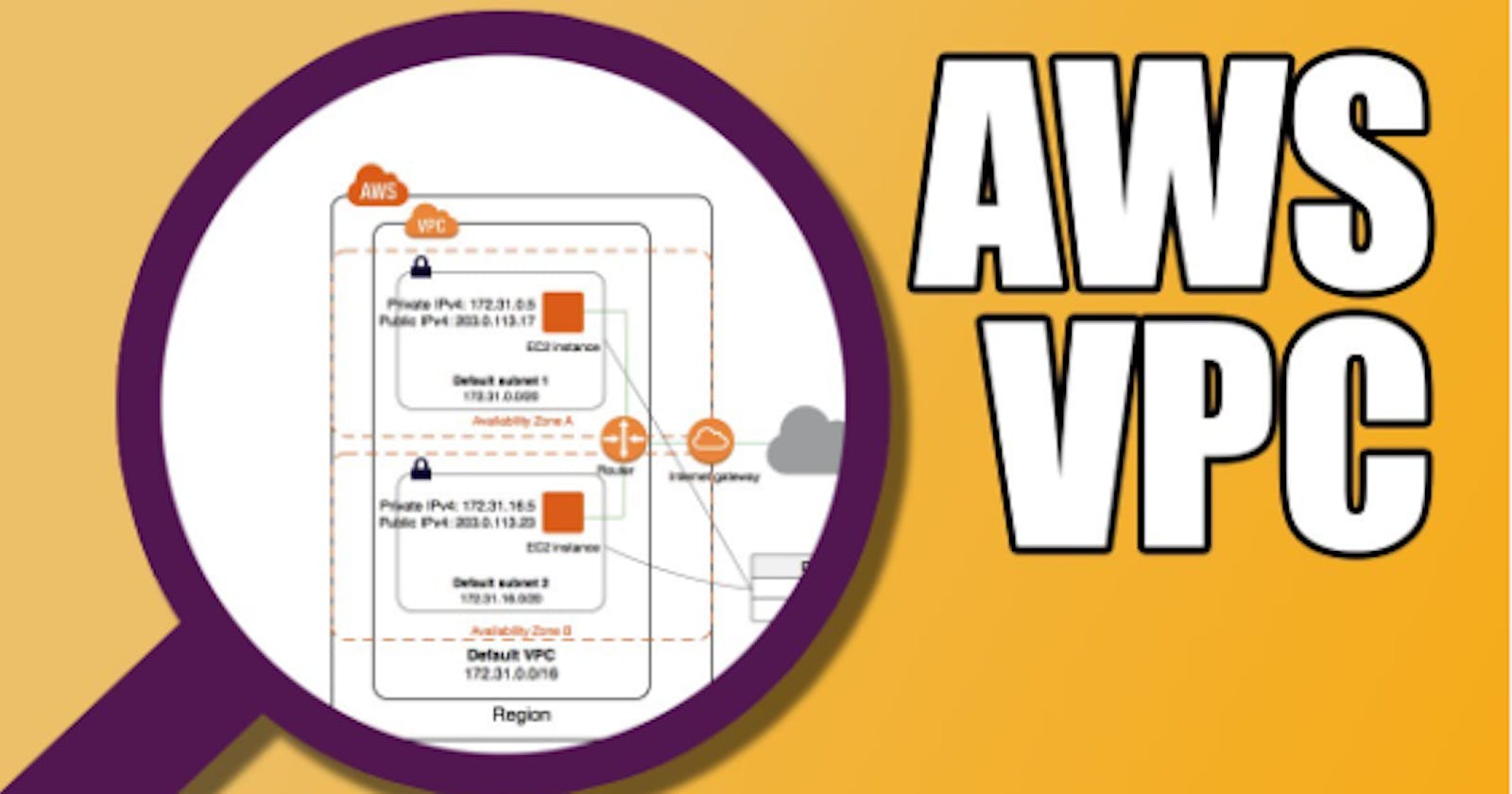🌐Introduction😊
Amazon Virtual Private Cloud (Amazon VPC) provides an awesome, isolated playground where you can launch and manage all your cloud resources, from virtual servers (EC2 instances) to databases, and more.
In this blog, we will take a deep dive to understand VPC.
🤔What is Amazon VPC?🤷♂️
Amazon VPC lets you provision a logically isolated section of the AWS Cloud where you can launch AWS resources in a virtual network that you define. You have complete control over your virtual networking environment, including selection of your own IP address range, creation of subnets, and configuration of route tables and network gateways. You can use both IPv4 and IPv6 in your VPC for secure and easy access to resources and applications
This virtual network closely resembles a traditional network that you’d operate in your own data center, with the benefits of using the scalable infrastructure of AWS.
🔑Key Concepts in Amazon VPC
CIDR Blocks: CIDR (Classless Inter-Domain Routing) Blocks are used to define the IP address range for your VPC. These blocks are specified in a structured format and serve as the foundation for IP address allocation within your VPC.
Subnets: Subnets are subdivisions of your VPC's IP address range. They are used to organize and segment resources within your VPC. Each subnet can be associated with specific availability zones, providing isolation and redundancy for your resources.
Security Groups and Network ACLs: These are integral to VPC security. Security Groups are stateful, meaning they control inbound and outbound traffic at the instance level, allowing you to specify who or what can communicate with your resources. Network Access Control Lists (NACLs) are stateless and offer additional control at the subnet level.
Route Tables: Route tables determine how network traffic is directed within your VPC and to external destinations, such as the internet. You can configure multiple route tables to control traffic flow for different subnets, enhancing network routing flexibility.
Internet Gateway: An internet gateway acts as the entry and exit point between your VPC and the public internet. It allows resources within your VPC to communicate with the internet and enables internet-initiated connections to reach your VPC resources.
🚀Importance of Amazon VPC
Amazon Virtual Private Cloud (Amazon VPC) holds immense importance in the AWS ecosystem for several key reasons:
Security: Amazon VPC provides a secure and isolated network environment within AWS. It allows you to define your own security groups, Network Access Control Lists (NACLs), and configure routing tables. This level of control ensures that your resources are protected from unauthorized access and malicious activities.
Customization: VPCs are highly customizable, allowing you to design your network architecture to meet your specific requirements. You can define IP address ranges, create subnets, and configure routing policies tailored to your applications and services.
Scalability: Amazon VPC is designed to scale with your business. You can easily add or remove resources within your VPC to accommodate changes in workload or business growth. This scalability is essential for businesses with dynamic computing needs.
Connectivity: VPCs offer seamless connectivity options. You can connect your VPC to on-premises data centers using VPN or AWS Direct Connect, enabling hybrid cloud architectures. This connectivity simplifies data sharing and migration between on-premises and cloud environments.
High Availability: Amazon VPC supports the deployment of resources across multiple availability zones. This redundancy ensures high availability and fault tolerance, reducing the risk of downtime due to hardware failures or network issues.
Compliance: AWS VPC allows you to build network environments that comply with various industry standards and regulations. This is crucial for businesses operating in regulated industries such as healthcare, finance, and government.
Cost Optimization: By creating separate VPCs for different applications or workloads, you can optimize costs by implementing granular cost controls and billing separation. This can help you track and manage expenses more effectively.
Resource Segmentation: VPCs enable you to segment your resources logically, making it easier to manage and secure your applications. You can create different VPCs for development, testing, and production, ensuring that each environment is isolated and controlled.
Global Reach: Amazon VPC is available in multiple AWS regions worldwide. This global reach allows you to deploy resources closer to your end-users or meet data residency requirements, enhancing performance and compliance.
Support for Complex Architectures: For businesses with complex architecture needs, Amazon VPC provides the foundation for building multi-tier applications, including web servers, application servers, and databases, all within a secure and isolated environment.
🧰Workshop Challenge🚧
Create a VPC
Create additional subnets
Edit the routing table
Create a Security Group
VPC Flow Logs (Optional)
Clean up resources
🙌Conclusion
Amazon VPC is a fundamental service in AWS that offers robust network management and security capabilities. Its importance lies in providing the infrastructure and tools necessary to create secure, customized, scalable, and highly available network environments to support a wide range of AWS workloads and applications.
✉Endcard
🎉 Thank you for joining me on this insightful journey into the world of AWS VPC
❤ If you found this blog helpful and informative, don't forget to give it a like!
👉 Stay updated with my latest posts and never miss out on exciting content! Click that Follow button to join and stay in the loop!
👔 Follow me on Linkedin --> rupak1chakraborty
Stay tuned for more such contents...👋🔍🌈

